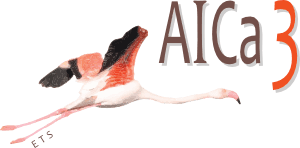Currently, there is no specific therapy that can counteract the course of the disease.
However, there are 3 paths on which medical and scientific research has focused in the search for a therapy for LGMD2A type cingulate dystrophies as well as other forms of dystrophies: drug therapy, gene therapy, cell-mediated therapy.
However, unlike Duchenne muscular dystrophy and the closest dystrophy, the dystrophy of the belts due to dysferlin deficiency (LGMD2B), the experiments carried out in the dystrophy of the belts due to calpain 3 deficiency are numerically much smaller than the others. The reasons may be multiple, including: 1) the role played by calpain 3, more complex than the "structural" proteins, 2) difficulty in assessing the biochemical effect after any transplantation or gene transfer in mouse models.
In calpain 3 deficiency cingulate dystrophy as well as all other dystrophies, one of the major problems in the therapeutic setting is the paucity of noninvasive outcome measures that are able to give an unequivocal indication of efficacy/lack of efficacy of a treatment.
In LGMD2A, selective muscle involvement, especially in the early stages of the disease, could be an advantage but this factor has not been sufficient to open concrete avenues to therapy.
DRUG THERAPY
Patients with cingulate muscular dystrophy have been part of controlled clinical trials involving several other dystrophies
- Myostatin Inhibitors (MYO-029: neutralizing antibodies against myostatin: endogenous negative regulator of muscle growth) Randomized, multicenter, international, placebo-controlled study involving 116 adult dystrophic subjects. The study demonstrated the safety and good tolerability of the molecule without, however, giving evidence of effectiveness on muscle strength and motor function (Wagner K, J Mendell, 2008)
- Combination of nitroxide donors and nonsteroidal anti-inflammatory drugs: this is an open-label, single-center study involving 71 adult dystrophic subjects, 35 treated and 36 not pharmacologically treated. In the murine model, the combination of these drugs has been shown to reduce the inflammatory and necrotic component of muscle fibrocells and to stimulate the regenerative processes at the muscle level, resulting in a functional effect with improvement in the performance of strength and resistance to effort in animal models murine.
Preliminary study in human subjects demonstrated the safety and good tolerability of this long-term treatment. (D’Angelo MG, 2011)
- Cortisone combined with other immunosuppressive drugs (methotrexate and azathioprine) : pharmacological combination effective at both histological and functional motor level in an 11-year-old girl with calpainopathy and eosinophilic myositis( Serdaroglu Oflazer P, 2010)
- Creatine Monohydrate, L-Arginine: although in clinical practice these molecules are used in all muscular dystrophies, controlled clinical studies able to demonstrate the effectiveness of this treatment at the muscular level are still very limited (Walter, 2000)
GENIC THERAPY
The availability of murine models with knockout mice for calpain 3 gene and with transgenic mice with specific mutations, has allowed to demonstrate the possibility to induce changes at histological level through the introduction of calpain 3 for example with the system of gene transfer mediated by AAV (adeno-associated virus), paving the way for clinical trials in humans.
- Recombinant adenoviral vectors (rAAVs) that drive calpain 3 under control of a muscle-specific promoter: in the murine model, the expression of the transgene by intramuscular injection of the construct, was stable, with restoration of the specific proteolytic activity of calpain 3 without toxic effects at the muscular level. The muscular histological aspect also improved with functional improvements such as increased contractile strength and increased muscle trophism (Bartoli M, 2005)
- Inhibition of myostatin by expression of the mutated propeptide: again by intramuscular injection, the construct was shown to increase both muscle mass and absolute muscle strength in the calpain-deficient mouse model 3. The same gene construct did not prove effective in models of another form of cingulate dystrophy (alpha sarcoglycan deficiency) (Bartoli M, 2007)
